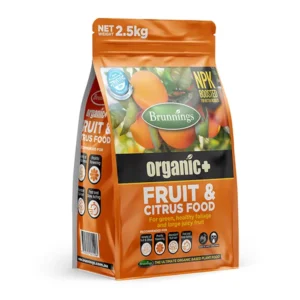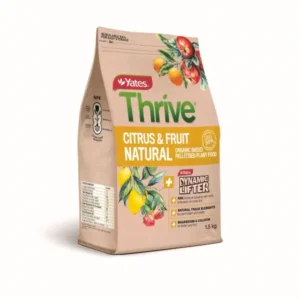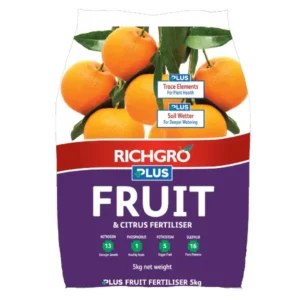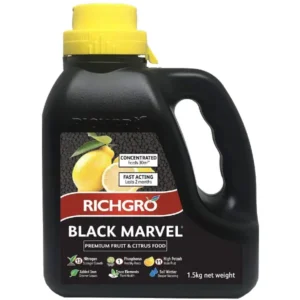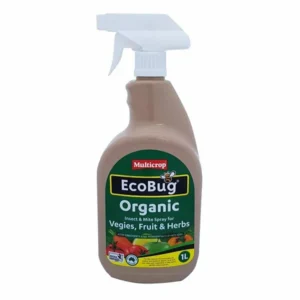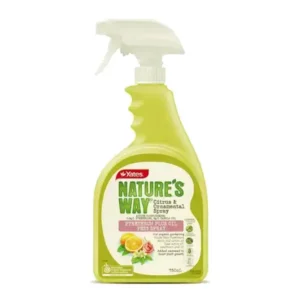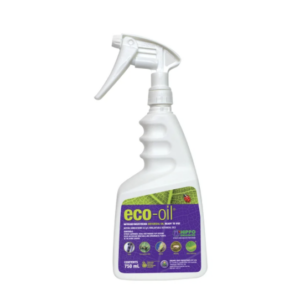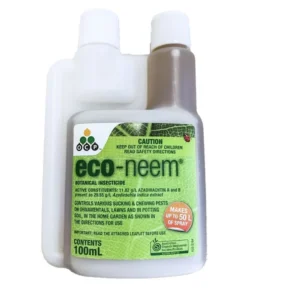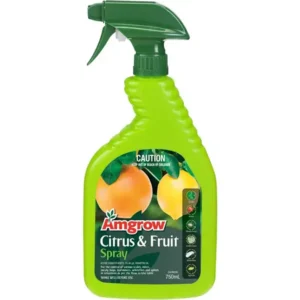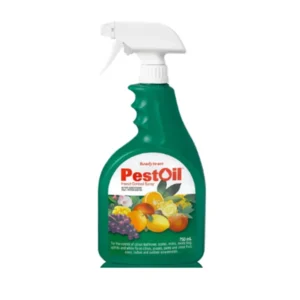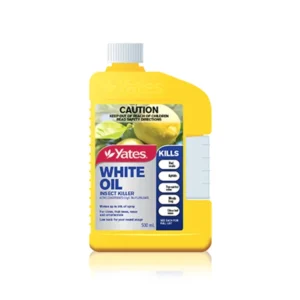Who doesn’t love a bit of citrus zing in their food or drinks, right? Citrus plants not only bring us these delicious fruits, but they’re also pretty as a picture, making them a favourite in gardens and orchards.
But here’s the twist – as popular as they are, these citrus beauties can be quite the magnet for pests. It’s like they’re throwing a party, and all these uninvited guests (think aphids, leafminers, and those pesky scale insects) just love to crash it. This doesn’t mean you should be discouraged; it’s just part of the deal when you’re dealing with something as desirable as citrus plants.
Now, how about this – grab your favourite cup of tea, get cozy, and let’s dive into the world of citrus plants. We’re going to explore all about these common pests that just can’t seem to stay away from citrus, and more importantly, how you can manage them. Ready? Let’s get started!
Spotting Common Citrus Plant Pests
Knowing what you’re up against is the first step in keeping your citrus happy and healthy. Let’s talk about identifying those pesky intruders that love to hang around your citrus plants.
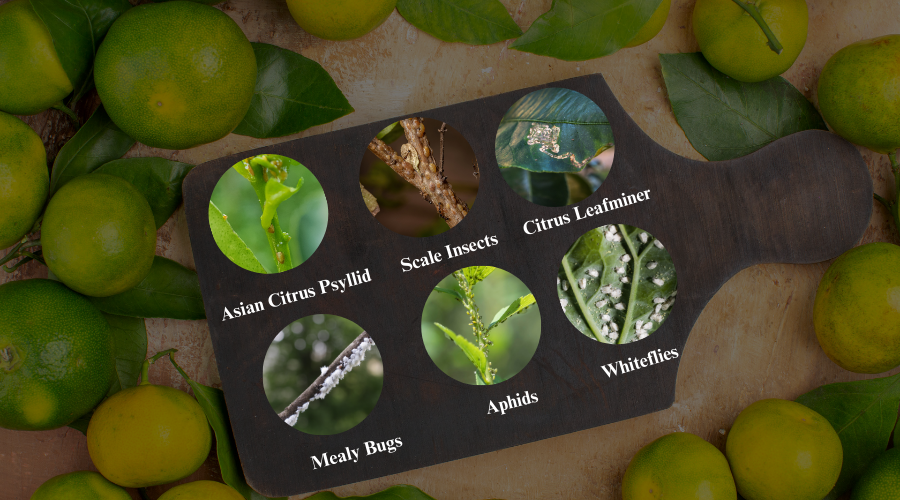
1. Asian Citrus Psyllid
What to Look For: These little guys are tiny, but they pack a big punch. They’re about the size of an aphid and are usually found on the tips of new growth. Keep an eye out for their distinctive mottled brown colour.
Why They’re a Problem: They’re not just munching on your plants; they’re also carriers of the citrus greening disease, which can seriously harm your trees.
2. Scale Insects
What to Look For: These critters can be sneaky! They look like small bumps on the stems, leaves, or fruit of your citrus plants – almost like a part of the plant itself.
Why They’re a Problem: They suck the sap from your plants, weakening them, and once they’re settled in, they’re tough to get rid of.
3. Citrus Leafminer
What to Look For: Their handiwork is pretty distinctive. You’ll see squiggly lines on the leaves where the larvae have literally mined their way through.
Why They’re a Problem: Besides making the leaves look unsightly, these tunnels can be gateways for other pathogens to enter the leaves.
4. Mealybugs, Aphids, and Whiteflies
What to Look For: These are the popular kids of the citrus pest world. Mealybugs look like tiny cottony spots, aphids are small and can be of various colours, and whiteflies are tiny white flying insects usually found under the leaves.
Why They’re a Problem: They all love to suck sap, weakening the plant, and they can also spread diseases.
Pest Management Strategies
Cultural Control
This is all about creating an environment that’s less appealing to pests. Keep your citrus trees healthy and happy. Regular watering, proper fertilisation, and pruning can make a big difference. A healthy plant is like a fortress – tougher for pests to invade.
Regular Watering
- Why It’s Important: Citrus trees need consistent moisture to stay healthy. Irregular watering can stress them, making them more susceptible to pests.
- How to Do It Right:
- Consistency is Key: Water your trees regularly. The amount and frequency depend on the climate and soil type, but a general rule is to keep the soil evenly moist, not waterlogged.
- Deep Watering: Instead of frequent shallow watering, opt for less frequent but deep watering. This encourages deeper root growth, which supports a healthier tree.
Proper Fertilization
- Why It’s Crucial: Nutrient-rich soil promotes robust growth. A well-nourished citrus tree can better resist and recover from pest attacks.
- Best Practices:
- Right Nutrients: Use a fertilizer specifically formulated for citrus trees. These typically contain higher amounts of nitrogen, along with essential micronutrients like zinc and iron.
-
- Timing: Fertilize in the growing season, usually spring and summer. Over-fertilizing, especially in the off-season, can lead to lush growth that attracts more pests.
- Follow Instructions: Over-fertilizing can be just as harmful as under-fertilizing. Stick to the recommended amounts and frequencies.
Pruning
- The Benefits: Pruning helps maintain the tree’s shape, remove unproductive or dead branches, and improve air circulation, which can reduce the likelihood of pest infestations and fungal diseases.
- How to Prune Effectively:
- Timing: The best time to prune citrus trees is in late winter or early spring before they start their growth spurt.
- Technique: Remove any branches that are dead, damaged, or diseased. Thin out crowded areas to improve air and light penetration.
- Moderation: Don’t over-prune, as this can stress the tree. Generally, removing about 10-20% of the canopy annually is recommended.
Tip: Always clean up fallen leaves and debris. This reduces hiding spots for pests and can interrupt their life cycles.
Chemical Control
Sometimes, you’ve got to bring in the big guns, and that means insecticides.
In managing common citrus pests organically in Australia, consider these products: Eco-Oil and PestOil are effective for controlling Asian Citrus Psyllids and scale insects by smothering them. Multi Crop Eco-Bug is a versatile choice, particularly useful against citrus leafminers. For a broader range of pests, including leafminers and scales, Eco-Neem is potent, disrupting their life cycles and feeding habits.
Remember, always check the label for the latest instructions and safety measures. And be cautious about using these during flowering periods to protect our bee friends!
Preventative Measures

Plan Ahead for Prevention
Taking preventive steps is key to managing pests in your citrus orchard. Start by being proactive – regularly check your trees for early signs of pests, keep the area tidy, and make sure your trees are healthy to reduce the chance of infestation.
Buffer Zone
Next, think about setting up buffer zones. Planting certain flowers and herbs can create a natural barrier against pests. Marigolds, lavender, and alyssum are great choices as they attract beneficial insects like ladybugs and hoverflies. Herbs such as dill and fennel draw in ladybugs and wasps that help control caterpillars, while parsley provides a home for other helpful insects. Adding shrubs like the Butterfly Bush can also attract more beneficial species. These plants not only fight off pests but also reduce the need for chemical pest control.
Wildlife-Friendly Spaces
Additionally, creating wildlife-friendly spaces can make a big difference. Diversity is crucial in organic farming. By having various plants, birdhouses, or even a small pond, you attract creatures like insect-eating birds and frogs. These natural allies help keep pest populations under control.
Selective Use of Chemicals
However, sometimes you might need to use chemicals. The trick is to use them wisely and only when necessary. Choose products that are specifically effective against the pests you’re dealing with and apply them carefully. Rotating different chemicals also helps to prevent pests from becoming resistant.
Listed below are some of the products that are specially designed for managing Citrus Pests. You can try them for quicker results. Please remember to read the labels and follow the instructions.
Conclusion
By implementing these strategies, you can significantly reduce the impact of pests on your citrus plants. It’s about being proactive, staying vigilant, and using a combination of methods to keep your citrus trees healthy and productive.
For in-depth information on citrus trees, the New South Wales Department of Primary Industries (DPI) is an excellent resource. They offer a wealth of knowledge and expert advice, perfect for citrus growers.
So, there you have it! With these tips and tricks up your sleeve, you’re well on your way to becoming a citrus plant hero. Here’s to lush, vibrant, and pest-free citrus groves!





